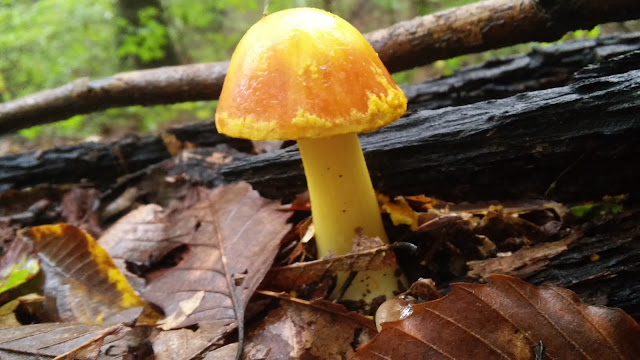With so much rain and runoff, I thought it be a great day to check out the Richardson Lane Watershed and see what was happening with water levels and what kind of conditions the local runoff was in.
We explored the middle to southeastern portion of Tributary East. The goal was to reach the headwaters, but past logging and the thick under story prevented us from going all the way.
 |
| Photo by: Briana Bill The water is up! |
 |
| Photo by: Briana Bill
Deer sign in the watershed. His and hers scat. Buck to the left, doe to the right. We found an area with heavy foraging and a bedding area.
|
 |
| Photo by: Briana Bill A deer rub near the bedding area. |
 |
| Photo by: Briana Bill We traveled south along the stream bank and found this little waterfall. |
 |
| Photo by: Briana Bill |
 |
| Photo by: Briana Bill
As we traveled upstream, the under-story changed. The stream bank became thicker with smaller diameter trees and shrubs. The herbaceous layer was much thicker.
|
 |
| Photo by: Troy Shelton While not a monster, this is a large tree for this watershed. It was very tall. |
 |
| Photo by: Troy Shelton
We hiked up to an up-gradient tobacco field. At the edge of the field were large rocks that had been removed from the field years ago. They were stacked up in a row.
|
 |
| Photo by: Briana Bill At the forest edge, over looking the tobacco field. |
 |
| Photo by: Briana Bill
While runoff was occurring at this field, the vegetated roads and forested buffers provided good erosion control. This was the worst spot at the field's edge.
|
Google Maps 2015
















